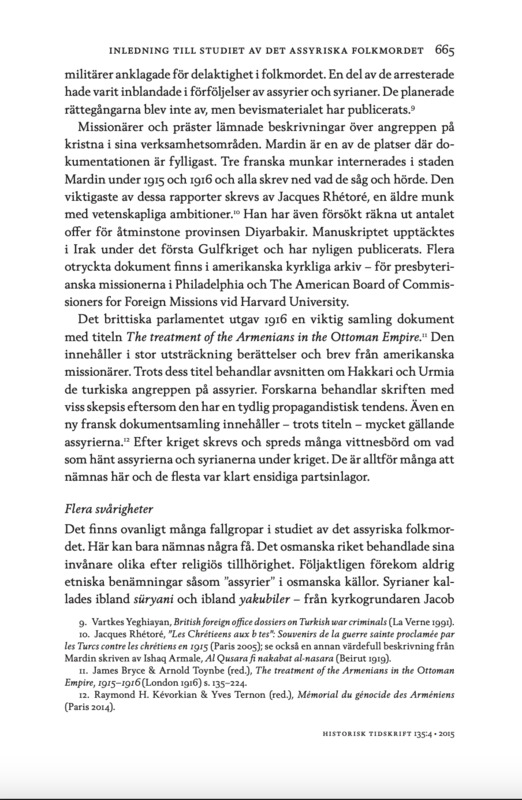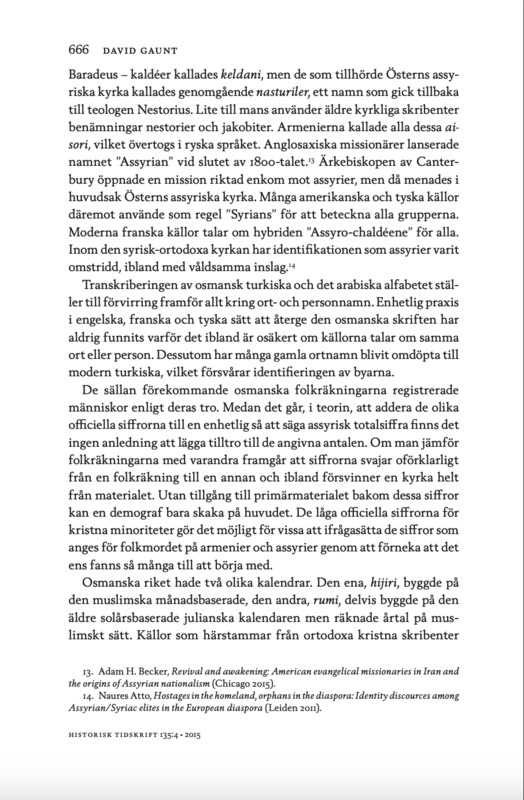-
Title
-
Inledning till studiet av det assyriska folkmordet
-
Creator
-
David Gaunt
-
Date
-
2015
-
Description
-
In Inledning till studiet av det assyriska folkmordet (translation), David Gaunt argues that research on the Assyrian genocide is riddled with terminological pitfalls rooted in how identities were recorded. Under the Ottoman millet system, subjects were classified by religion rather than ethnicity, so ethnic labels like “Assyrian” are largely absent from official sources. Instead, Syriac Orthodox communities appear as Süryani or Yakubiler (from Jacob Baradeus), Chaldean Catholics as Keldani, and members of the Church of the East as Nasturiler—labels echoed in older ecclesiastical discourse as “Jacobites” and “Nestorians.” Neighboring and later traditions added their own exonyms: Armenians called these groups aisori (a term that entered Russian), while late-nineteenth-century Anglo-Saxon missionaries popularized “Assyrian,” typically referring chiefly to the Church of the East; many American and German sources, by contrast, used the umbrella “Syriacs.”
For Gaunt, the consequence is methodological: the same people can surface in archives under different names depending on the language, confessional lens, or missionary agenda of the source. Effective scholarship therefore requires “cross-walking” these labels across Ottoman Turkish, Armenian, Russian, German, and English materials, attending to transliteration variants and the confessional baggage each term carries, and recognizing that “Assyrian” gained broader ethnonymic currency relatively late.
-
Language
-
Swedish
-
Subject
-
Genocide




